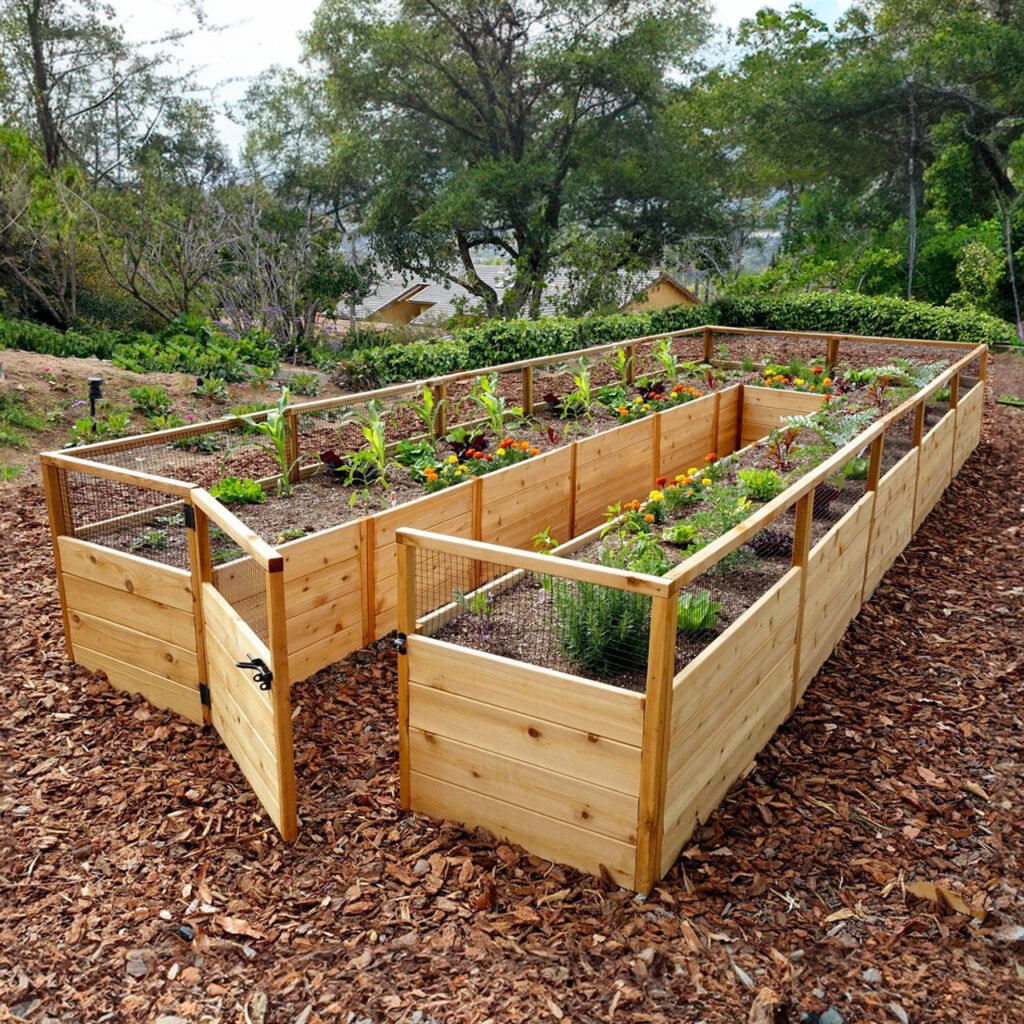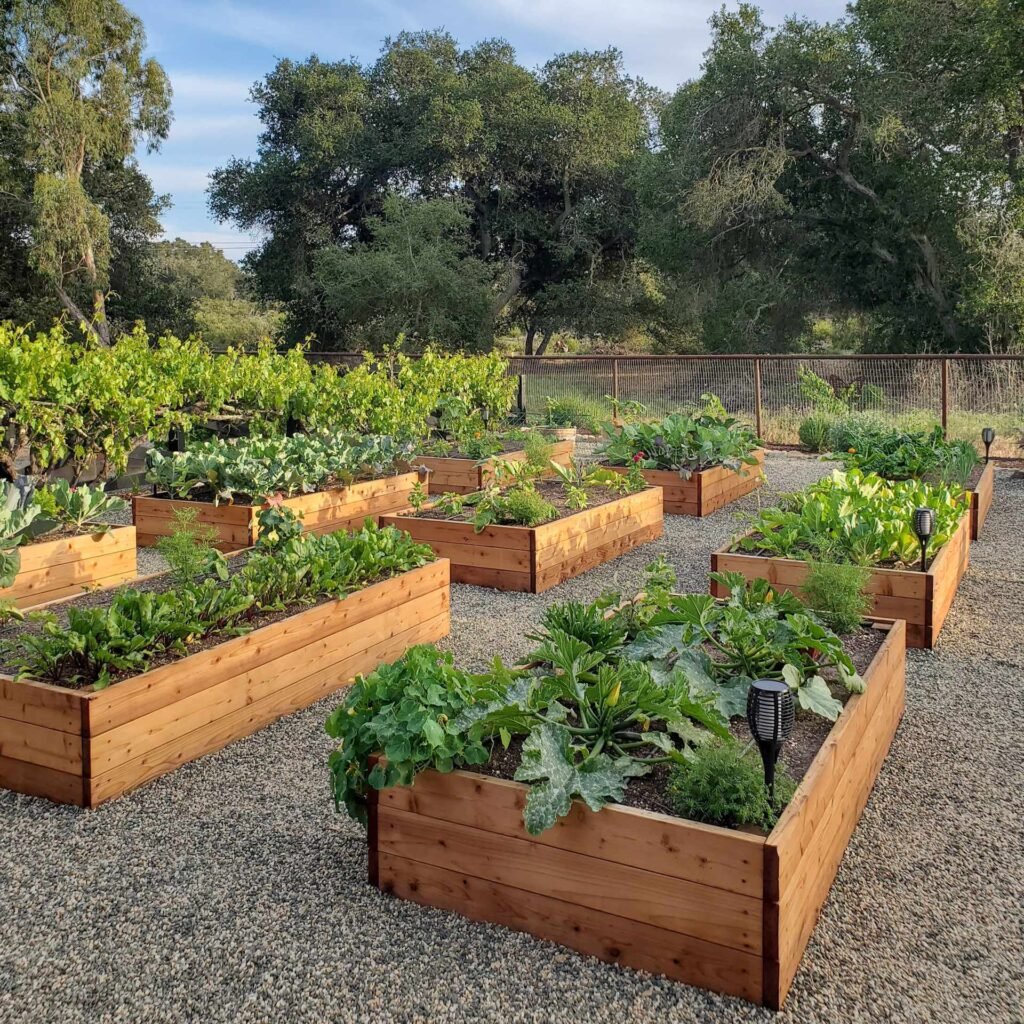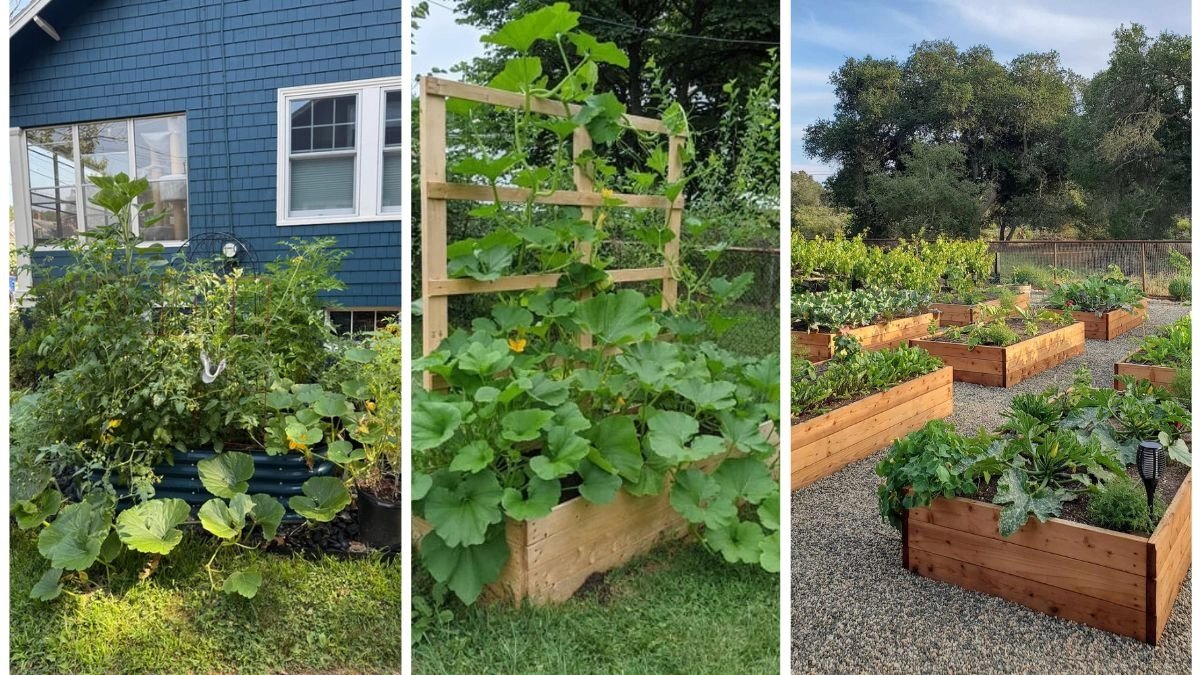Gardening is one of the most rewarding hobbies you can pursue, offering benefits that range from fresh produce to stress relief. But ask any experienced gardener, and they’ll tell you—not all garden setups are created equal.
One method that continues to grow in popularity among beginners and seasoned green thumbs alike is raised bed gardening. Why? Because it simply makes everything easier.
From better soil control to fewer weeds and less strain on your back, raised beds offer a long list of advantages that can transform the way you garden. In this article, we’ll explore the science, structure, and simplicity behind raised bed gardening, and why this method has become a favorite among modern gardeners.
What Are Raised Beds?

A raised bed is essentially a garden bed that is elevated above the natural ground level. It’s usually contained within a frame made of wood, stone, metal, or other materials, and filled with a curated mix of soil and compost.
Raised beds can vary in size and height depending on your needs. Some are as low as 6 inches, while others are tall enough to eliminate bending entirely.
1. Better Soil Control = Better Plant Growth

One of the biggest advantages of raised bed gardening is the ability to control your soil quality.
In traditional in-ground gardening, you’re stuck with whatever soil nature has given you—which may be clay-heavy, sandy, rocky, or lacking in nutrients. Raised beds allow you to create a customized soil mix that’s perfect for the plants you’re growing.
Benefits of Soil Control:
- Improved drainage: Raised beds prevent water from pooling, reducing the risk of root rot.
- Soil warmth: The soil in raised beds warms up faster in the spring, allowing for an earlier start to planting.
- Nutrient density: You can add compost, worm castings, and organic matter to supercharge your growing medium.
- Fewer toxins: If you live in an urban area or on previously developed land, raised beds help isolate your plants from potentially contaminated native soil.
Ideal Soil Mix for Raised Beds:
- 50% topsoil
- 30% compost
- 20% aerators like perlite, vermiculite, or coarse sand
This rich, loose blend promotes strong root development and higher yields.
2. Fewer Weeds and Easier Weed Management
Weeding is one of the most dreaded chores in gardening. Raised beds make this task significantly easier for two key reasons:
A. Less Weed Seed Exposure
When you fill your raised bed with fresh, high-quality soil and compost, you avoid much of the weed seed bank that lives in the ground. Fewer weed seeds = fewer weeds.
B. Easier Maintenance
The defined edges and smaller surface area make it easier to spot and pull weeds before they spread. Plus, adding a layer of mulch on top (like straw, bark, or leaf mold) helps smother weeds and retain moisture.
You can also lay weed-blocking fabric at the bottom of the raised bed during installation to further reduce weed intrusion from below.
3. Better Accessibility = Less Strain on Your Body

Traditional ground-level gardens require a lot of bending, kneeling, and squatting—movements that can be tough on your back, knees, and joints, especially as you get older.
Raised beds bring the garden up to a more comfortable height, which:
- Reduces back strain
- Makes planting, weeding, and harvesting easier
- Is wheelchair-friendly when built at appropriate height
In fact, raised bed gardening is often recommended for:
- Elderly gardeners
- People with mobility challenges
- Those recovering from injury or surgery
Even a 12–18 inch tall raised bed can make a huge difference in comfort.
4. Improved Drainage and Water Control

Drainage is critical in gardening. Plants need water, but they don’t want to sit in soggy soil. Poor drainage leads to root rot, fungus, and disease.
Raised beds are naturally excellent at draining excess water. Since they’re elevated and not compacted by foot traffic, water can flow freely through the soil.
Tips to Maximize Drainage:
- Use loose, organic-rich soil
- Avoid walking on the soil inside the bed
- If needed, drill holes in the bottom or use gravel layers
At the same time, raised beds retain moisture better when mulched correctly, making watering more efficient.
5. Extended Growing Season
Because raised beds warm up faster in the spring and drain better after snow or rain, you can often start planting earlier than you would in the ground.
In some regions, raised beds can extend the growing season by several weeks, giving you an edge for cool-season crops like lettuce, spinach, and carrots.
Additionally, the contained design allows for easy use of:
- Row covers
- Cold frames
- Mini hoop houses
These additions can protect plants from frost, wind, and pests—giving you even more control over your garden’s microclimate.
6. Space Efficiency and Higher Yields

Raised beds encourage intensive planting methods, such as square-foot gardening, which helps maximize production in small spaces.
Benefits include:
- Tighter plant spacing = fewer weeds
- Denser planting = better use of water and nutrients
- Optimized design = easier access from all sides (no stepping in the bed!)
A 4×8 foot raised bed can feed a family of four with seasonal vegetables throughout spring, summer, and fall when managed properly.
7. Pest Control Made Easier
Raised beds don’t eliminate pests entirely, but they make them easier to manage.
Advantages:
- Barrier from burrowing pests like gophers or moles (use wire mesh at the base)
- Easier to install fencing or netting for rabbits, deer, or birds
- Visual access helps you spot insect infestations sooner
- You can easily cover crops with floating row covers or cloches
By elevating your plants, you reduce the chances of random ground pests reaching them unnoticed.
8. Tidy, Organized Appearance
A well-maintained raised bed garden looks structured and intentional, which is especially appealing in urban or suburban settings. It enhances curb appeal and can even add value to your property.
Aesthetic Benefits:
- Clean lines and defined spaces
- Easier to maintain symmetry and design
- Great for showcasing edible landscapes or ornamental plants
Raised beds can also be customized with trellises, arches, or decorative edging to create a visually stunning garden that doubles as a design feature.
9. Customizable for Any Location or Climate
Whether you’re working with clay soil, rocky terrain, or limited space, raised beds are versatile and adaptable.
You can build them:
- On top of poor soil
- In small patios or balconies (with container beds)
- With materials suited for your climate (e.g., rot-resistant cedar for wet areas, galvanized steel for dry zones)
Raised beds also allow for crop rotation, companion planting, and vertical gardening, making them a flexible choice for any gardener.
Summary: Why Raised Beds Make Gardening Easier
| Benefit | How It Helps |
|---|---|
| Better soil control | Boosts plant health and yields |
| Weed reduction | Saves time and labor |
| Easier on the body | Reduces physical strain |
| Improved drainage | Prevents root rot and overwatering |
| Longer growing season | More harvests per year |
| Space efficiency | Ideal for small or urban gardens |
| Easier pest control | Protects crops and simplifies defense |
| Cleaner design | Enhances beauty and structure |
| Customization | Adapts to your environment and goals |
Final Thoughts
Raised bed gardening isn’t just a trend—it’s a smart, efficient, and rewarding way to garden. Whether you’re growing flowers, vegetables, herbs, or all of the above, raised beds give you greater control, better results, and a more enjoyable experience.
By solving common gardening problems—like poor soil, weeds, and accessibility—raised beds empower both beginners and experts to grow more with less effort.
If you’re looking for a way to make gardening easier, more productive, and more beautiful, raised beds are the answer.

Leave A Comment